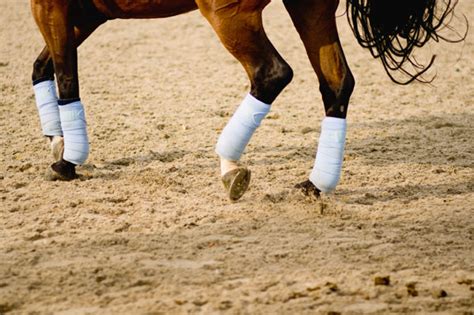Prevent Bute Overdose: Your Horse's Safety First
Phenylbutazone, commonly known as Bute, is a powerful non-steroidal anti-inflammatory drug (NSAID) frequently used in equine medicine to manage pain and inflammation associated with various conditions like colic, arthritis, and lameness. While highly effective, Bute carries significant risks if administered incorrectly, leading to potentially fatal overdoses. This comprehensive guide outlines crucial steps to prevent Bute overdose and ensure your horse's safety.
What is a Bute Overdose?
A Bute overdose occurs when a horse receives a higher dose of phenylbutazone than recommended, exceeding its ability to metabolize the drug. This can lead to a range of adverse effects, from mild gastrointestinal upset to severe organ damage and death. The severity of the overdose depends on factors like the dosage, the horse's weight, and its overall health.
Signs of a Bute Overdose in Horses
Recognizing the symptoms of a Bute overdose is crucial for prompt veterinary intervention. Early detection significantly improves the chances of successful treatment. Watch for these signs:
- Gastrointestinal Issues: These are often the first signs, including anorexia (loss of appetite), colic (severe abdominal pain), diarrhea, and bloody stools.
- Kidney Problems: Bute is processed primarily through the kidneys. An overdose can strain these organs, resulting in reduced urine production, changes in urine color, and potentially kidney failure.
- Ulcers: Bute can cause or exacerbate stomach and intestinal ulcers.
- Depression and Lethargy: Your horse may become unusually subdued, showing a lack of energy and interest in its surroundings.
- Dehydration: This can be a serious consequence of diarrhea and reduced water intake.
- Jaundice: Yellowing of the gums, eyes, and skin is a late-stage indicator of liver damage.
- Laminitis: In some cases, a Bute overdose can contribute to laminitis, a painful and potentially crippling hoof condition.
How to Prevent a Bute Overdose
Preventing a Bute overdose requires diligent attention to detail and careful adherence to veterinary instructions. Here's a detailed breakdown of preventative measures:
1. Accurate Dosage Calculation:
- Always follow your veterinarian's instructions precisely. This includes the dosage, frequency, and duration of treatment. Never guess or deviate from the prescribed regimen.
- Use an accurate weighing scale. Ensure you know your horse's weight accurately to calculate the correct dose. Fluctuations in weight can impact the effectiveness and safety of the medication.
- Double-check calculations. It’s always best to double-check your calculations to avoid errors. A simple mistake can have serious consequences.
2. Proper Administration:
- Administer Bute as directed. Follow the veterinarian's instructions regarding the method of administration (oral paste, powder, or injection).
- Avoid mixing Bute with other medications. Interactions with other drugs can increase the risk of adverse effects. Always consult your vet before combining Bute with other medications.
- Store Bute safely. Keep the medication out of reach of children and other animals. Store it in a cool, dry place, as directed on the label.
3. Regular Monitoring:
- Observe your horse closely for any signs of adverse reactions. Be vigilant about changes in appetite, behavior, or elimination patterns.
- Report any unusual symptoms to your veterinarian immediately. Don't wait to see if the symptoms improve on their own. Early intervention is critical.
- Regular blood work: Your vet may recommend regular blood tests to monitor kidney and liver function during prolonged Bute treatment. This helps detect potential problems early on.
4. Understanding Drug Interactions:
- Inform your veterinarian about all medications your horse is taking. This includes supplements, herbal remedies, and other drugs. Some medications can interact negatively with Bute, increasing the risk of overdose or adverse effects.
- Avoid over-the-counter medications. Never administer any over-the-counter medications to your horse without first consulting your veterinarian.
What to Do If You Suspect an Overdose
If you suspect your horse has experienced a Bute overdose, contact your veterinarian immediately. This is a veterinary emergency. Early treatment is crucial to minimizing the damage and improving the chances of recovery. Your vet may recommend supportive care, including intravenous fluids, medication to protect the stomach and kidneys, and other measures to manage symptoms.
Frequently Asked Questions (FAQs)
Can you give a horse too much Bute?
Yes, absolutely. Giving a horse too much Bute can lead to serious health complications, including organ damage and death. Always follow your vet's instructions precisely.
What are the long-term effects of Bute overuse?
Chronic Bute overuse can lead to serious damage to the kidneys, stomach, and intestines. It's crucial to only use Bute as directed by a veterinarian and for the shortest possible duration.
How long does it take for Bute to leave a horse's system?
The elimination half-life of Bute varies, but generally, it takes several days for the drug to be completely eliminated from the horse's system.
Are there alternative pain relievers for horses?
Yes, several alternatives to Bute exist. Your veterinarian can discuss these options and determine the most appropriate pain management strategy for your horse. It's important to remember that each horse is an individual, and the best treatment plan depends on the specific situation.
By carefully following these guidelines and working closely with your veterinarian, you can significantly reduce the risk of a Bute overdose and ensure the well-being of your equine companion. Remember, prevention is always better than cure when it comes to your horse's health.

